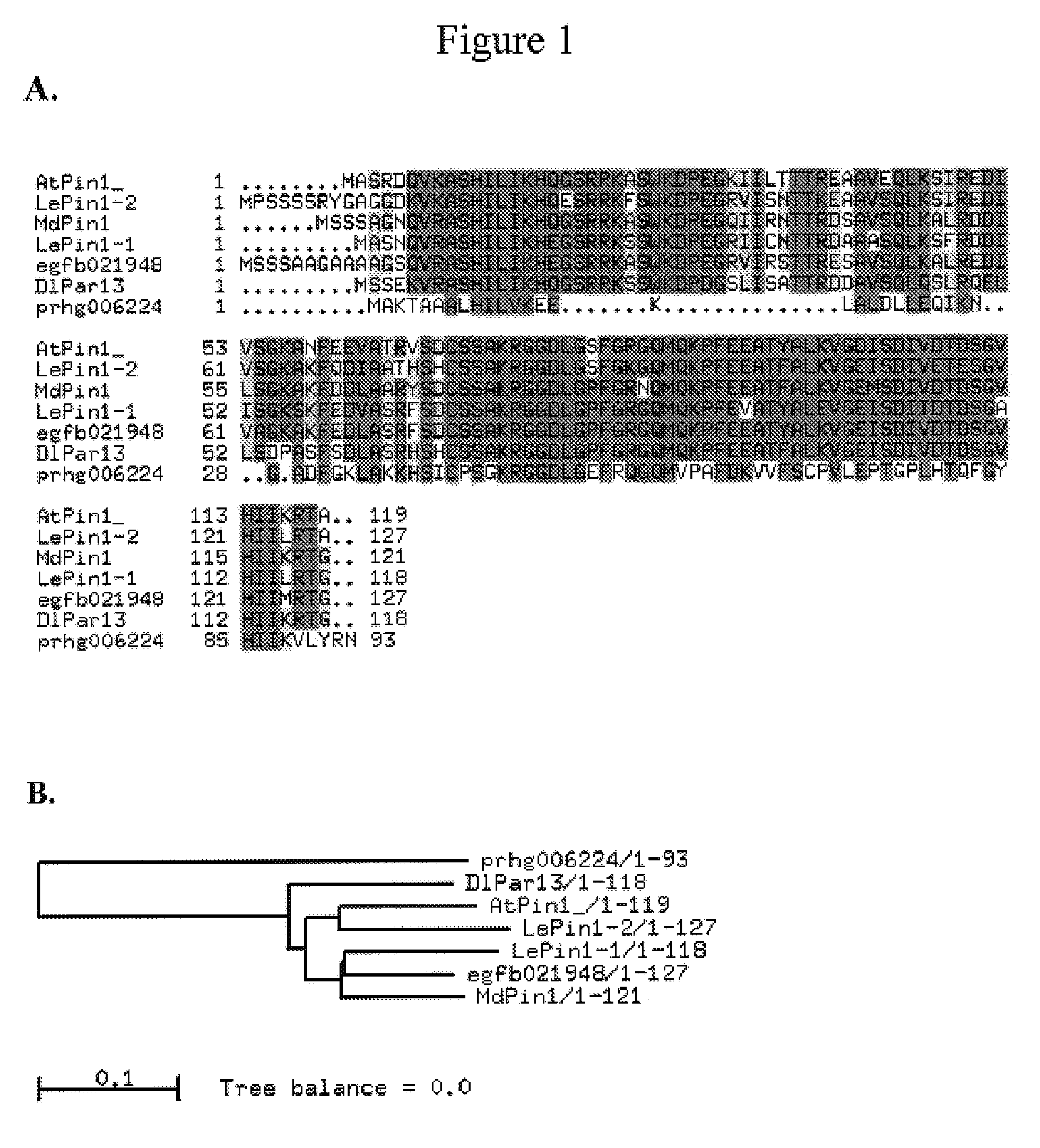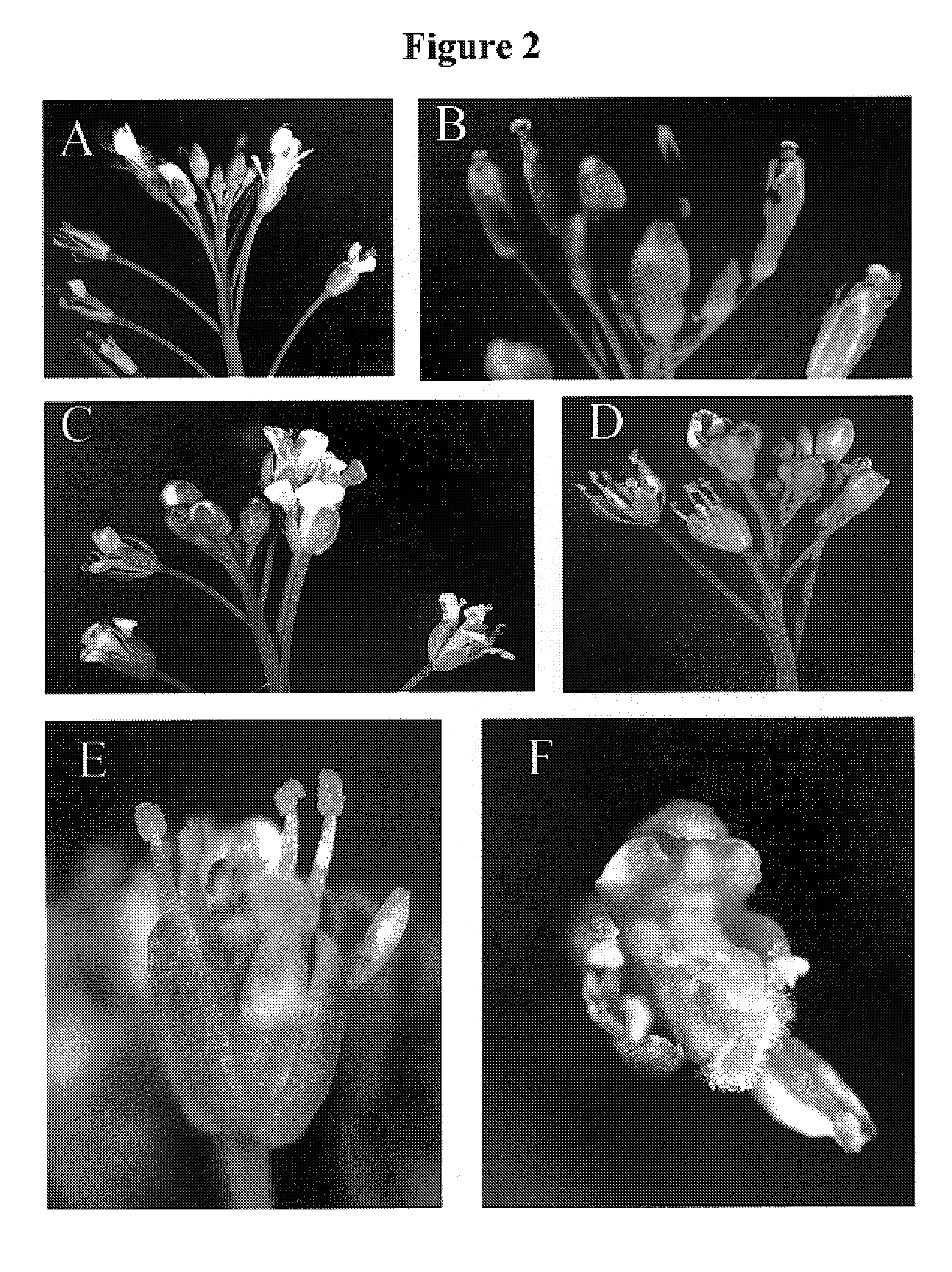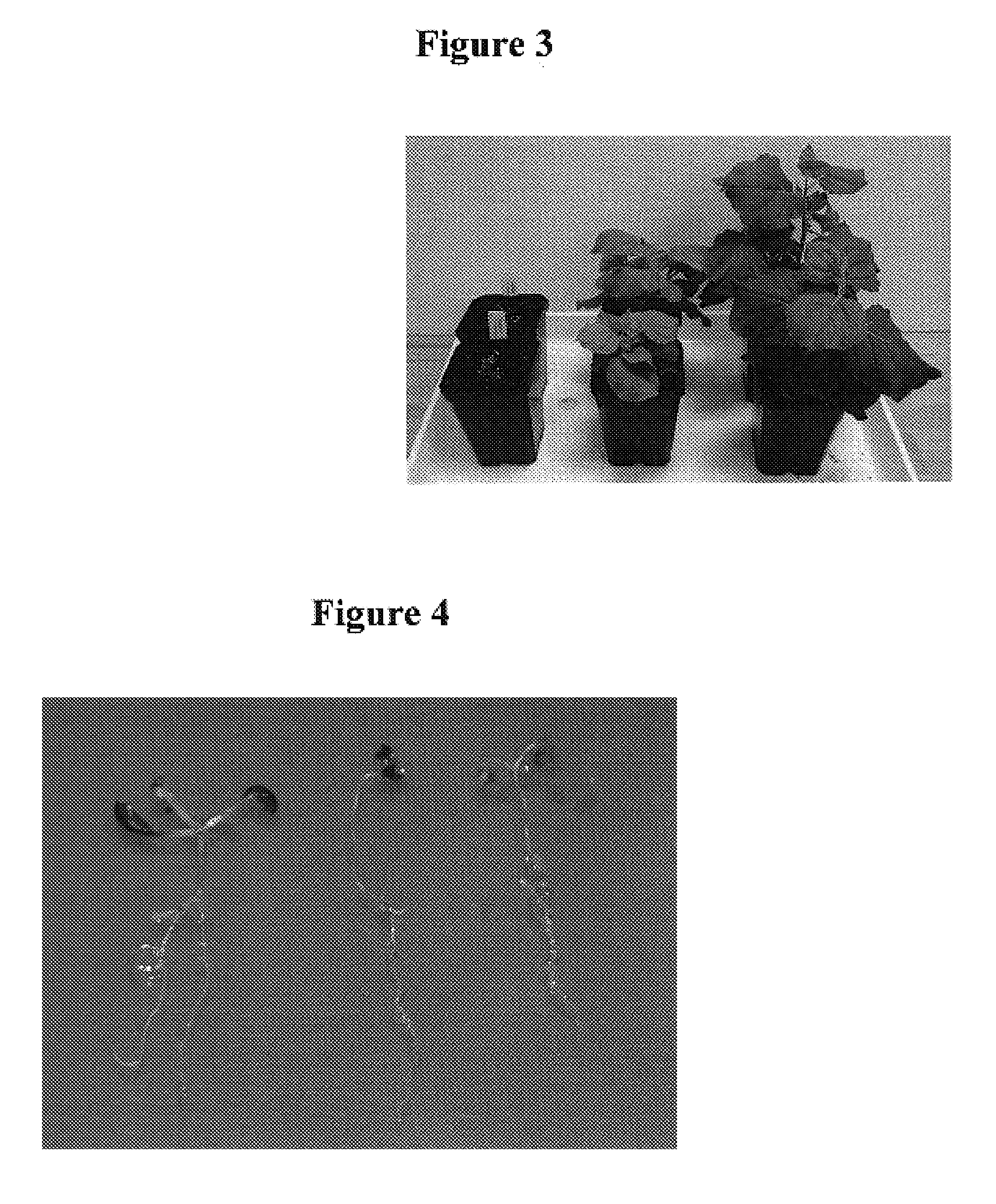Methods for modulating plant growth and biomass
a technology of plant growth and biomass, applied in the field of plant polynucleotides encoding cell cycle proteins, can solve the problems of not being well understood, not being described whether, and the relationship between cell division and plant development is still not well understood, so as to increase the transformation efficiency and regeneration of transgenic plants
- Summary
- Abstract
- Description
- Claims
- Application Information
AI Technical Summary
Benefits of technology
Problems solved by technology
Method used
Image
Examples
example 1
Isolation and Characterization of cDNA Clones from Eucalyptus arandis, Pinus radiata, Lolium perenne and Cucurbit Species
[0143]Eucalyptus grandis, Pinus radiata, Lolium perenne and cucurbit cDNA expression libraries from tissues of whole seedlings, leaves at different developmental stages, vegetative buds, flowers, floral buds, roots, fruit at different developmental stages, seed, phloem, cambium, early wood, late wood, mature wood, vegetative stem and juvenile wood, were constructed and screened as follows.
[0144]mRNA was extracted from the plant tissue using the protocol of Chang et al. (Plant Molecular Biology Reporter 11:113-116, 1993) with minor modifications. Specifically, samples were dissolved in CPC-RNAXB (100 mM Tris-Cl, pH 8,0; 25 mM EDTA; 2.0 M NaCl; 2% CTAB; 2% PVP and 0.05% Spermidine*3 HCl) and extracted with chloroform:isoamyl alcohol, 24:1. mRNA was precipitated with ethanol and the total RNA preparate was purified using a Poly(A) Quik mRNA Isolation Kit (Stratagene,...
example 2
Phenotypic Changes Produced by Overexpression of Genes in Arabidopsis Plants
[0150]cDNA sequences containing complete open reading frames were cloned into genetic constructs for constitutive expression and phenotype analysis in Arabidopsis plants. The ORF sequences were cloned between a constitutive promoter (35S or pine super-ubiquitin promoter) and OCS terminator in the sense orientation to achieve over-expression and ectopic expression of the gene. The promoter-ORF-OCS cassette was then cloned into the binary vector pART27. The resulting gene constructs were transferred into Arabidopsis thaliana “Columbia” plants using the floral dipping in planta transformation procedures (Clough S J and Bent A., Floral dip: a simplified method for Agrobacterium-mediated transformation of Arabidopsis thaliana. Plant J. 16: 735-743 (1998)). The GUS reporter gene was cloned into the pART27 plasmid and served as a negative control. This control plasmid is referred to as pART69. T1 seeds were collect...
example 3
Role of AtPin1 in Petal and Stamen Development
[0156]The experiments described in this Example suggest that plant Pin1 homologs may be useful in controlling plant floral reproduction. For these experiments, sense and antisense constructs were prepared comprising the Arabidopsis AtPin1 gene (At2g18040; SEQ ID NO 23) under the control of the AP3 promoter. Genomic DNA was amplified using the primers given in SEQ ID NOS: 24 and 25, using standard amplification protocols. The amplified fragments were cloned into the binary vector pART69 that contains a nptII gene for kanamycin resistant and a GUS report gene, under the control of constitutive NOS and MAS promoter respectively. The sense construct is referred to as pJY602 and the antisense construct is pJY603. These two binary vectors were transferred into Arabidopsis thaliana Columbia plants using Clough and Bent floral dipping transformation protocols.
[0157]Thirty-two percent (42 / 131) of transgenic lines of pJY602 and thirty-nine percent...
PUM
| Property | Measurement | Unit |
|---|---|---|
| diameter | aaaaa | aaaaa |
| density | aaaaa | aaaaa |
| strength | aaaaa | aaaaa |
Abstract
Description
Claims
Application Information
 Login to View More
Login to View More - R&D
- Intellectual Property
- Life Sciences
- Materials
- Tech Scout
- Unparalleled Data Quality
- Higher Quality Content
- 60% Fewer Hallucinations
Browse by: Latest US Patents, China's latest patents, Technical Efficacy Thesaurus, Application Domain, Technology Topic, Popular Technical Reports.
© 2025 PatSnap. All rights reserved.Legal|Privacy policy|Modern Slavery Act Transparency Statement|Sitemap|About US| Contact US: help@patsnap.com



